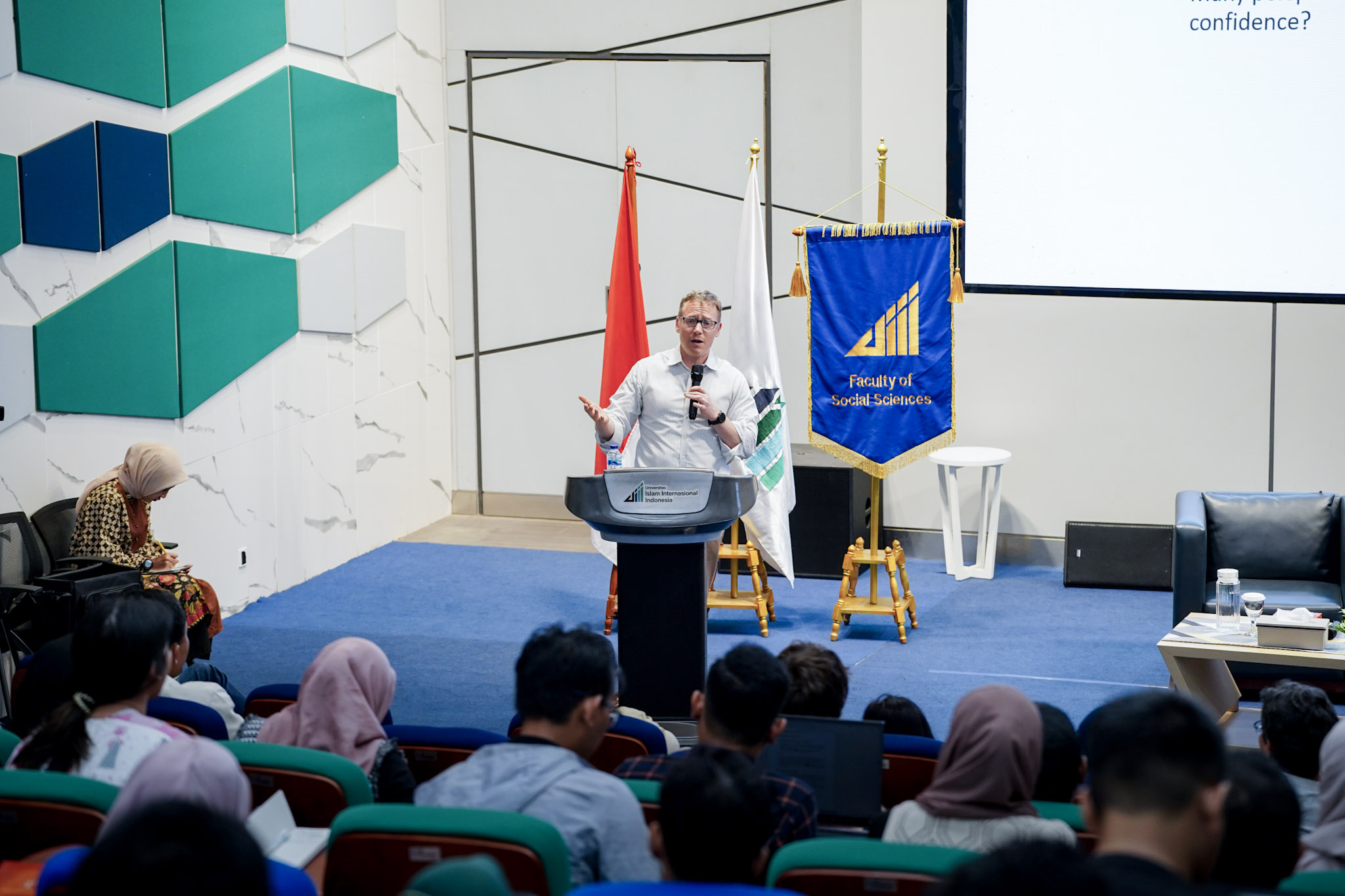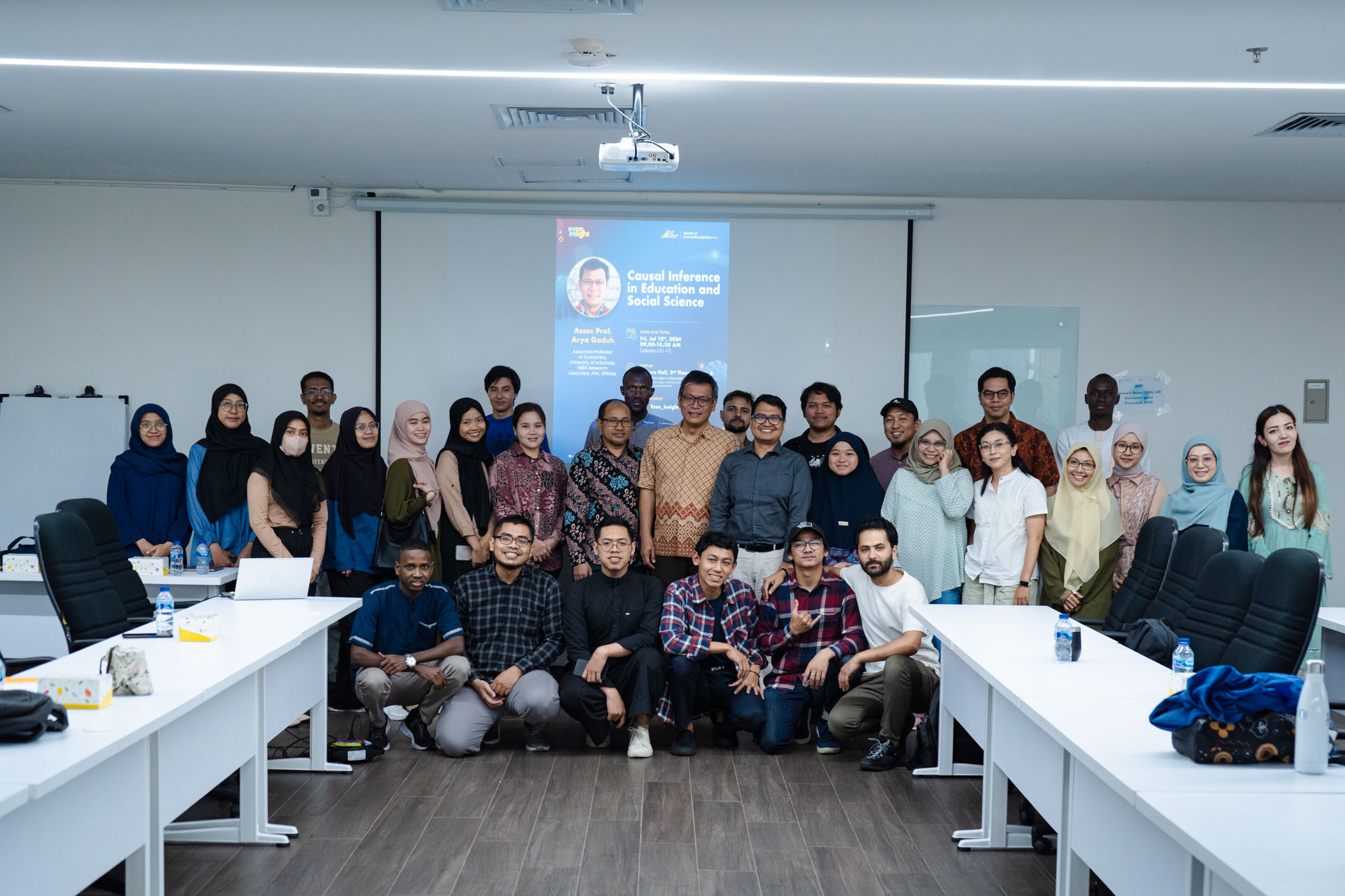Integrating Qualitative and Quantitative Methods in Social Science Research
June 18, 2024Contributor: Nadya Nabillah Istiqomah Jayadi | Editor: Dadi Darmadi
 Professor Thomas B. Pepinsky delivered a public lecture at the UIII Campus in Depok, West Java, on June 14, 2024 (UIII/Achmad Jatnika).
Professor Thomas B. Pepinsky delivered a public lecture at the UIII Campus in Depok, West Java, on June 14, 2024 (UIII/Achmad Jatnika).
In the constantly evolving field of social science, the debate over the best research methods continues to spark interest and, at times, controversy. Traditionally, scholars have leaned heavily on either qualitative or quantitative methods, each offering distinct advantages and insights.
However, a growing number of researchers advocate for a more integrated approach, blending the rich, detailed narratives of qualitative research with the broad, statistical analyses of quantitative studies.
Unpacking the Methods
Qualitative methods have long been valued for their ability to delve into complex causal mechanisms and provide deep, nuanced insights into specific phenomena over time. They are particularly adept at uncovering the 'why' and 'how' behind social behaviors and events.
Quantitative methods, on the other hand, are prized for their ability to generalize findings across large populations through numerical data, focusing on the 'what' and 'how much.' They aim to establish broad patterns and relationships, often through large-scale surveys and experiments.
Pepinsky's Integration Framework
Thomas B. Pepinsky, a prominent professor from Cornell University, has proposed a compelling framework for integrating these two methodologies, emphasizing three primary approaches: using, combining, and aligning.
Linking as 'Using'
This approach is the most straightforward, involving the concurrent use of qualitative and quantitative data to enrich research findings. For instance, a study might present historical narratives alongside statistical analyses to provide a more comprehensive understanding of causal mechanisms.
Read also: The Faculty of Social Sciences of UIII successfully held FOSS Summer Training
Linking as 'Combining'
This method seeks a common logic between qualitative and quantitative approaches. By analyzing specific cases in depth and broadening the scope through extensive data collection, researchers can prevent selection bias and develop stronger, more reliable generalizations.
Linking as 'Aligning'
The most advanced and challenging approach, aligning, involves integrating qualitative methods within a quantitative framework to generate complex causal queries. This method enhances the consistency and robustness of research findings by combining the strengths of both approaches.
The Case for Integration
The question remains: Is it necessary to integrate qualitative and quantitative methodologies to produce robust social science research? While the integration of these methods can significantly enhance the confidence in research findings, there is no universal answer. The choice of methodology should be guided by the research objectives, available resources, and the researchers' expertise.
Read also: FoE Holds Software-Based Qualitative Data Analysis Workshop
According to Pepinsky, it's crucial to acknowledge that neither qualitative nor quantitative methods are inherently superior. Each offers unique strengths and insights, and their combined use can provide a more comprehensive understanding of social phenomena.
Embracing a Balanced Approach
As the landscape of social science research continues to evolve, there is a growing recognition of the value of a balanced approach that integrates both qualitative and quantitative methods. This holistic approach not only enriches the research process but also enhances the credibility and impact of the findings.
In conclusion, the integration of qualitative and quantitative methods represents a significant advancement in social science research. By leveraging the complementary strengths of both approaches, researchers can achieve a deeper, more nuanced understanding of the complex world we study. This integrated approach, while challenging, offers the promise of more robust, insightful, and impactful research outcomes.
- What Does Eid al-Fitr Mean for the UIII Academic Community?
- UIII PhD Scholar Ararat Kostanian Delivers Lecture at Armenia's Yerevan State University
- Swedish Ambassador to Indonesia Applauds UIII’s Vision, Explores Future Collaboration
- Depok Mayor Supports UIII as the Green Lung of Depok and Beyond
- Depok Mayor Pledges to Build Performance Hall at UIII
- New Parking Facility Launched, Part of UIII-Sentra Medika Hospital Partnership
- Yogyakarta’s UII Won 1st FisFastFest’s Clash of Campuses
- Vice Minister of Religious Affairs Praises UIII as a Global Hub for Islamic Education
- Hurray!! UIII Wins Football Championship
- Green Ramadan: UIII's Sustainable Bazaar Inspires Eco-Friendly Celebrations


